People ask me about incorrupt corpses at parties. I think that’s probably why I’m an Order member now. After a drink or two, some nice, normal person will pull me aside and ask me about an incorrupt saint they saw on vacation. Usually they were touring some gorgeous old church in Europe when they noticed a musty old corpse on display in between the Caravaggios and gilded putti. The guidebook said it was an incorrupt saint whose body never decomposed, but it sure looked a little… off.
By the time they start describing the saint’s waxy skin or shriveled hands, I see them start to study me. They hesitate. They look for confirmation that I’m a skeptic before they go on. When they saw the body, they knew it was a holy thing but right now the only words coming to mind would also describe a sideshow freak. Fortunately they don’t need to worry about me. I’m not going to hit anyone’s knuckles with a ruler for a little irreverence. I’m excited people are interested in this stuff. But I do think that the impulse to judge incorruptibles as simply real or fake is a fear-based response. If there’s a sucker born every minute, no one really wants to think it might be them so people approach the glass casket automatically looking for a con job.
What I can tell you from my own experience is that it helps to leave that fear of being a sucker behind for a minute. I’m not saying that you have to be a true believer to understand incorruptibility, but it helps to approach these bodies knowing that the people who care for them and interact with them aren’t carnival barkers trying to put one over on you or chumps worshiping fakes straight out of Madame Tussaud’s.
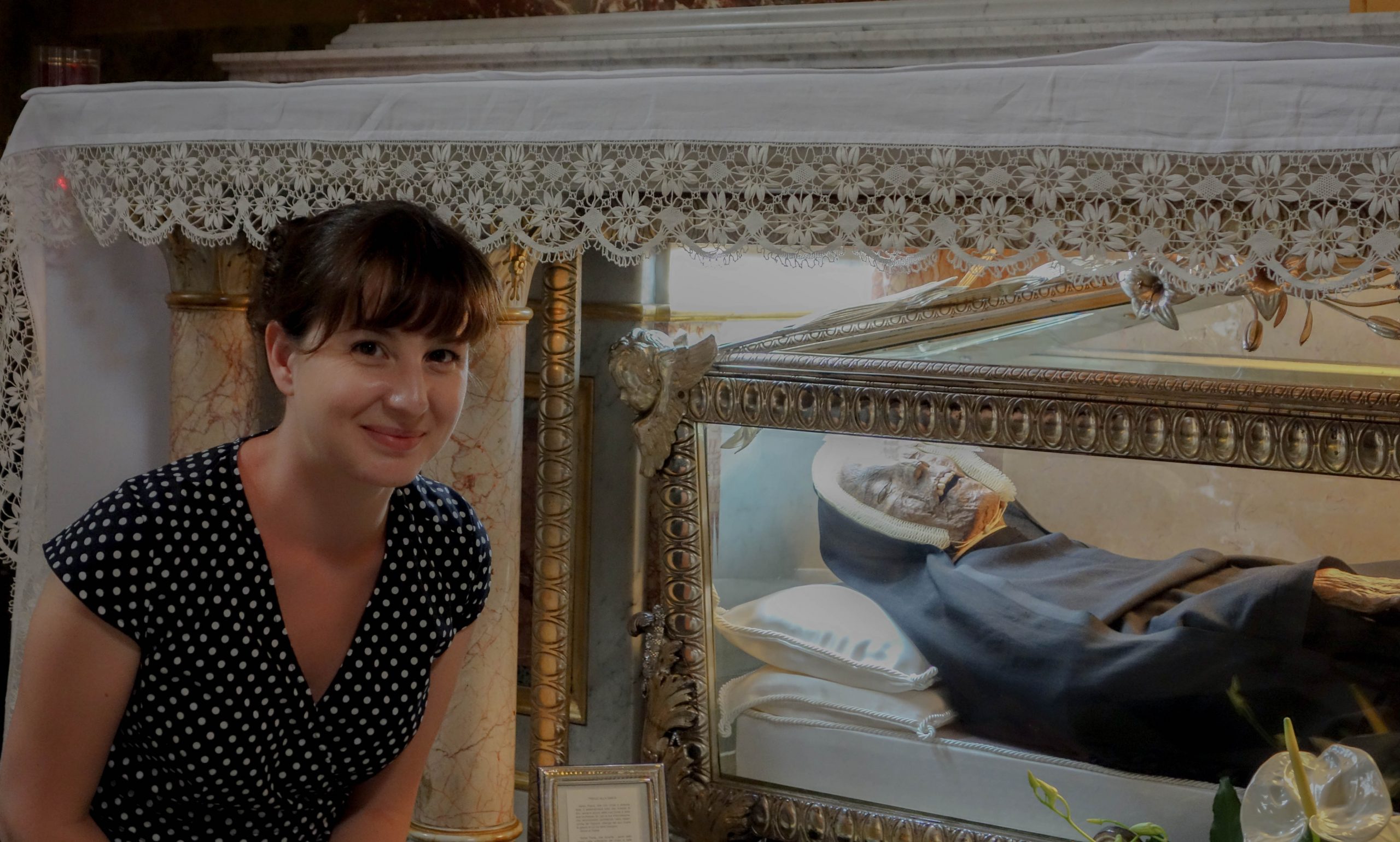
One of the problems is that most people judge these bodies based on photos or one quick viewing. Not many people get a chance to talk to the people who know the bodies best. The picture at the top is St. Paula Frassinetti and I. My tour guide that day was a nun at the convent St. Paula founded. She was also the one who insisted we take this picture. (I’m normally anti-corpse-selfie.) She was very open about the history of the body so there wasn’t any denial about its current condition or past treatments. Yep, incorruptibles get treatments (like a corpse spa) and it’s no big secret.
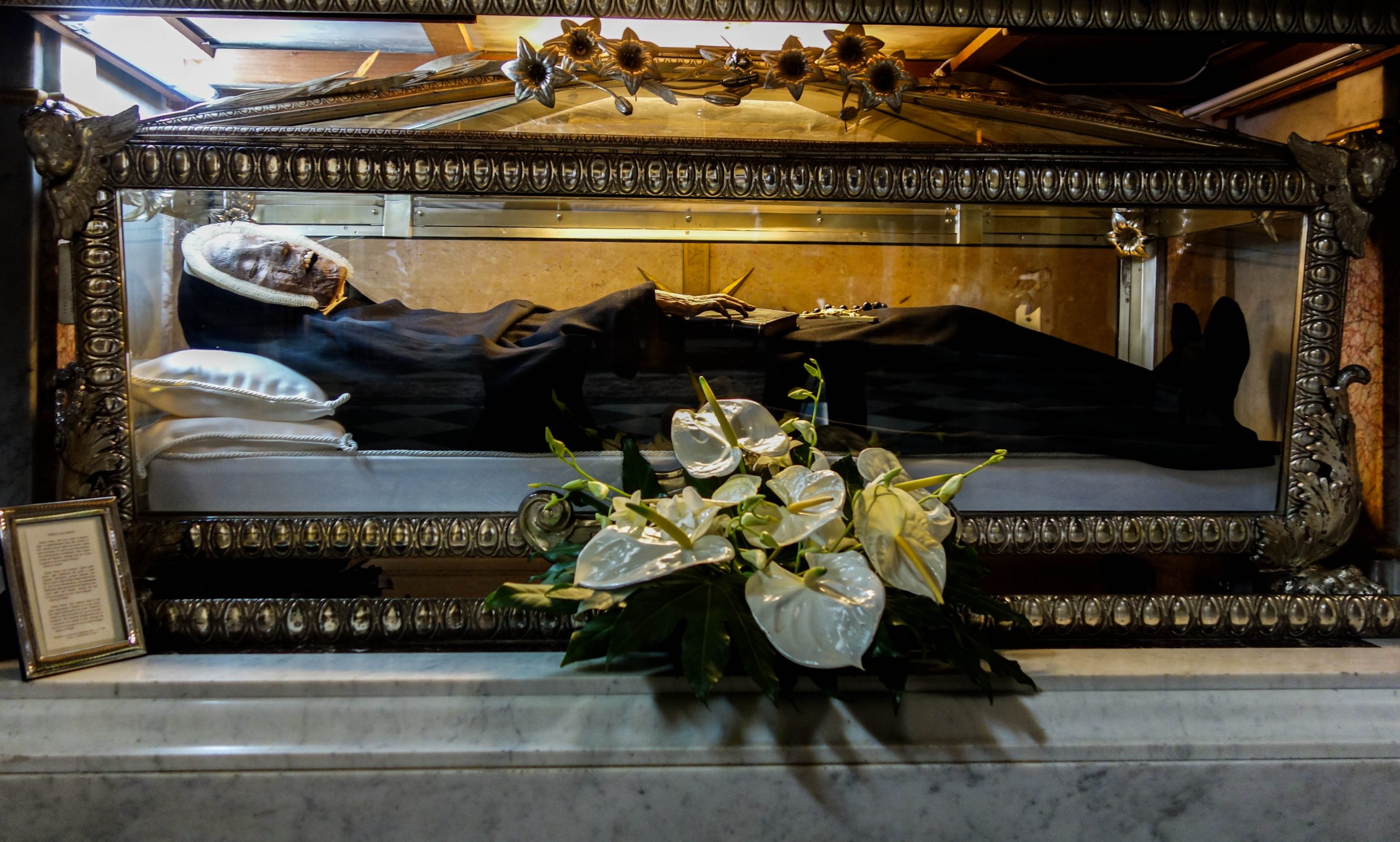
Now obviously St. Paula doesn’t look incorrupt anymore. The period when she truly didn’t show any signs of decay ended shortly after she was moved to a new tomb in the convent’s chapel, about twenty-four years after her death. After that, her body began to deteriorate so acid was applied to help preserve her. That wound up marring her skin, but at least left St. Paula intact so the nuns could continue to display her.
As you’ll see, this is a pretty typical case of incorruptibility. My guide went on to tell me that one time the convent’s handyman moved the saint’s body and she was able to see that it was still flexible. Interestingly, “flexible” is probably the most common word associated with incorrupt corpses, not “lifelike”. At its core, incorruptibility only means that the body was left in a state that should have lead to putrification, or the liquefaction of guts, but didn’t. It happens without a scientific explanation so embalmed bodies, mummies, cases of human saponification, and bog bodies are out. There’s also partial incorruptibility, where some organs putrefy and others, usually the obviously symbolic ones, don’t- like St. Vincent de Paul’s heart.
The fact that incorruptibility hinges on putrification is particularly significant if you remember the putridarium. If rotting in the parish crypt was a big metaphor for punishment in purgatory, incorrupt saints seem to say, “Thanks but we don’t need any time in purgatory. We’re literally all good.” That’s why St. Paula’s order is so eager to preserve and display her body. Just like public ossuaries, incorrupt saints are seen as physical manifestations of souls in heaven. But like icons and relics, the bodies are only miraculous in the sense that miracles are attributed to their veneration. According to Church doctrine, incorruptibility alone can’t be counted as a miracle anymore. More sophisticated scientific explanations as well as mistakes found in hundreds of years of preservation records have forced the Church to reconsider which saints deserved the title in the first place. But even if it’s not miraculous, incorruptibility won’t seem to, well, rot away.
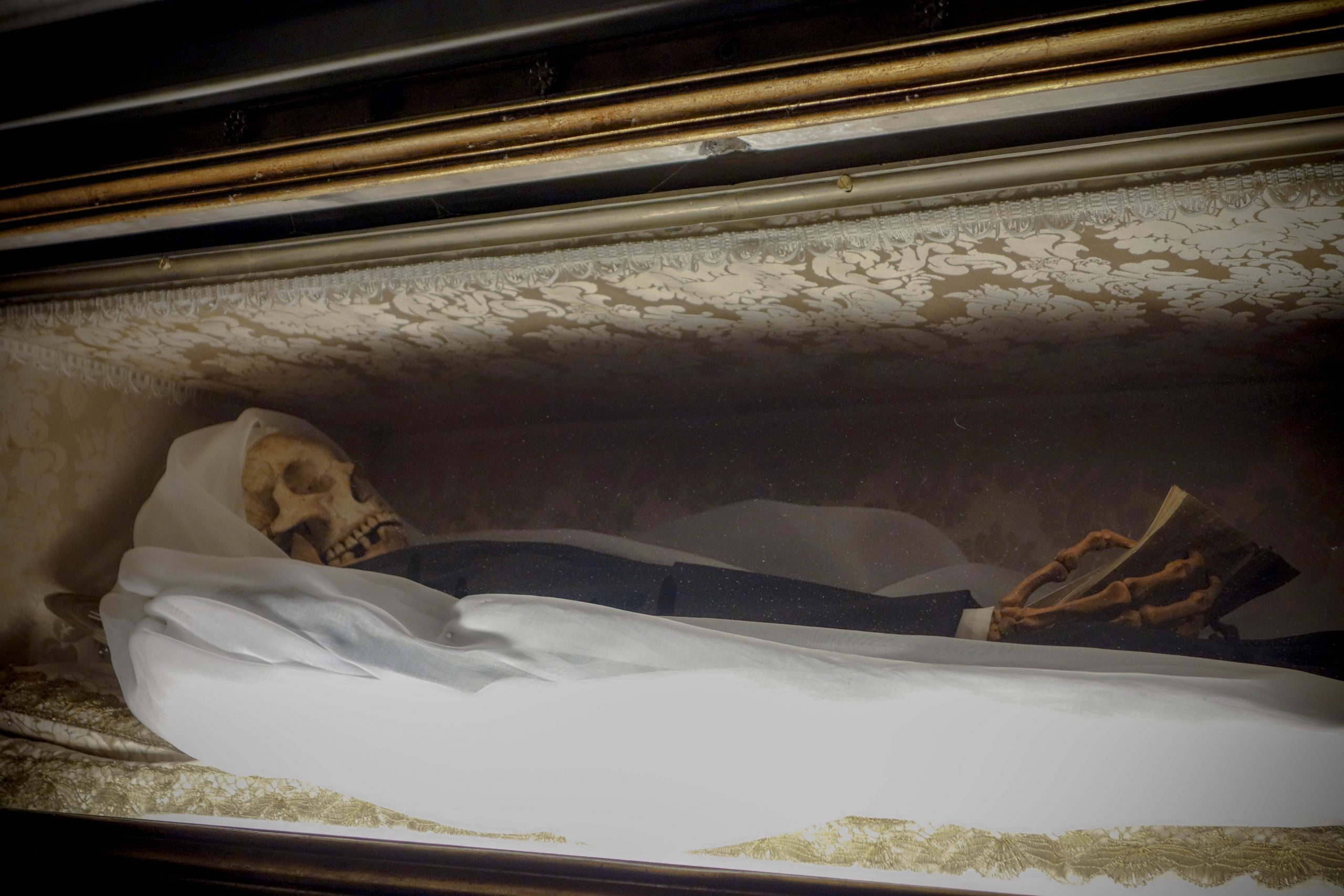
When a body is exhumed like St. Paula’s was, it’s usually because sainthood seems likely and the church wants to move the body to a more prominent place. During the move, clergy members inspect the remains to make sure they have the right person and maybe cut off a few piece to use as portable relics. This is how most incorruptibles are found. At the time of inspection, an incorrupt corpse is expected to be pliable and whole and look more or less like the day it was buried despite any damage to its shroud, burial clothes or coffin. A lot of times you’ll hear reports of a sweet floral smell coming from the corpse called the odor of sanctity. In some cases, the condition of the body is actually said to improve. The massive axe wound that killed St. Josaphat allegedly healed after his death. But what’s confusing is that even if the body is deemed incorrupt, the pristine state it’s in during the inspection usually isn’t permanent.
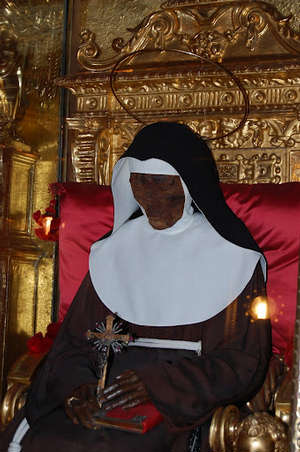
In the past, deterioration of incorrupt corpses could be attributed to exposing the body to bad air. According to a team of modern paleopathologists from the University of Pisa, that’s actually not too far from the truth. With the Vatican’s support, the team studied microenviornments in the former tombs of incorrupt corpses. They discovered that small differences in temperature, moisture, and construction techniques lead to some tombs producing naturally preserved bodies while others in the same church didn’t. Now you can debate God’s role in choosing which bodies went into which tombs before these differences were known, but I’m going to stick with the corpses. Once the incorrupt bodies were removed from these climates or if the climates changed, they deteriorated. This may have been what happened to St. Francesca Romana who was deemed incorrupt four months after her death in 1440 only to be found fully skeletonized in 1698 (though you still hear people refer to her as incorrupt).
Human interference factors into the decay of incorruptibles as well. St. Catherine of Bologna’s skin turned black from all the candles and oil lamps burning in her shrine. It’s also pretty common to hear about people trying to preserve a corpse’s incorrupt state, only to have it backfire. While St. Paula survived her acid bath in one piece, St. Julian Eymard’s body was accidentally destroyed by a similar treatment using carbolic acid. What’s left of him is now encased in a completely terrifying wax effigy that shows him wide-awake inside a casket.
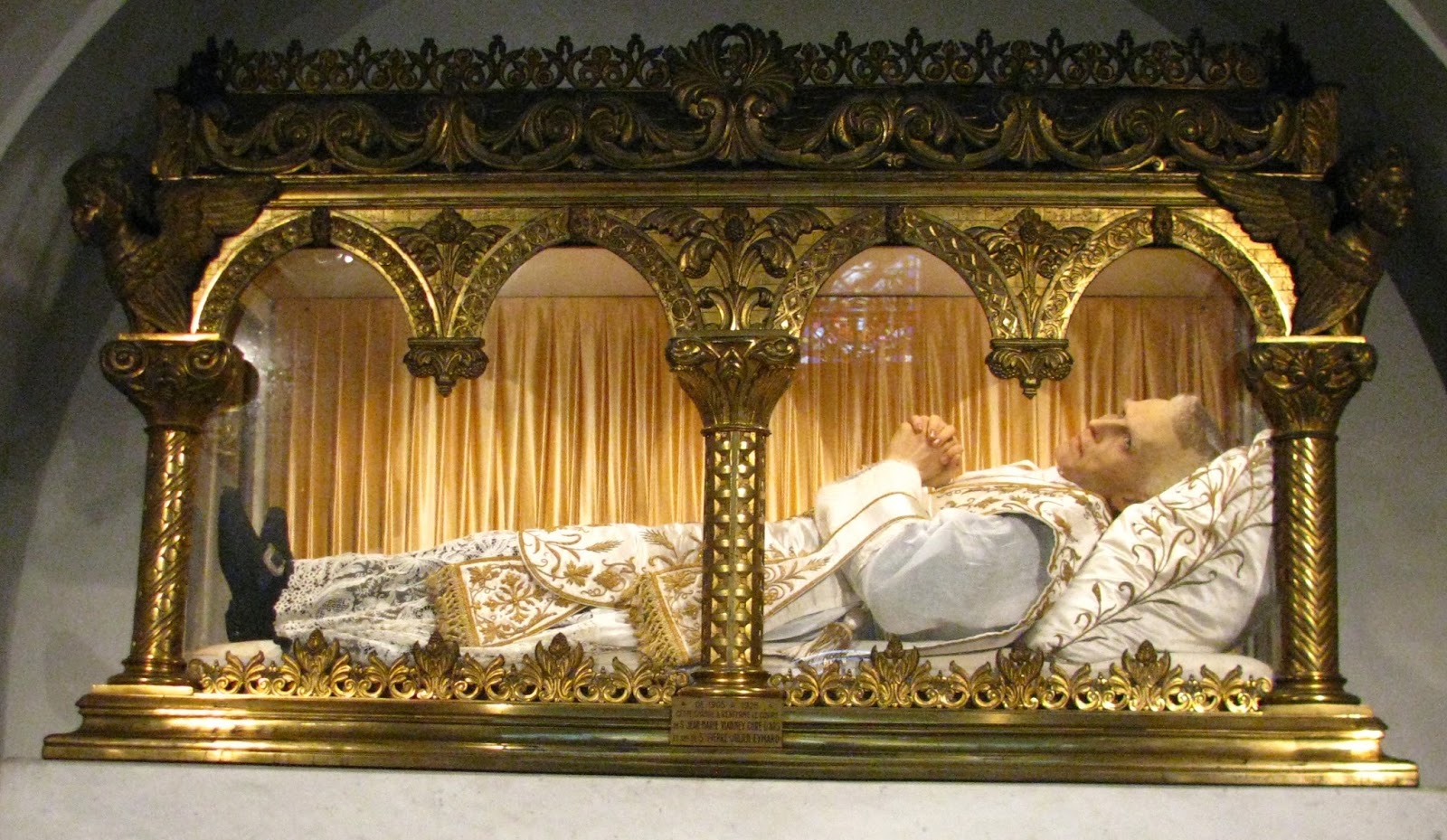
The use of wax as an artist’s medium invites even more confusion and misunderstanding when it comes to the incorrupt. There are thousands of wax effigies in Catholic churches. Some have relics inside them, others don’t, and maybe a few hundred are fully incorrupt corpses wearing wax masks. (The Vatican doesn’t take roll call so no one knows how many incorrupt saints there are in the world.) The style of waxwork ranges from detailed portraits like the one on Blessed Anna Maria Taigi to more minimalist, monochromatic coverings. Unless you know who’s who, it can be impossible to tell effigies from bodies.
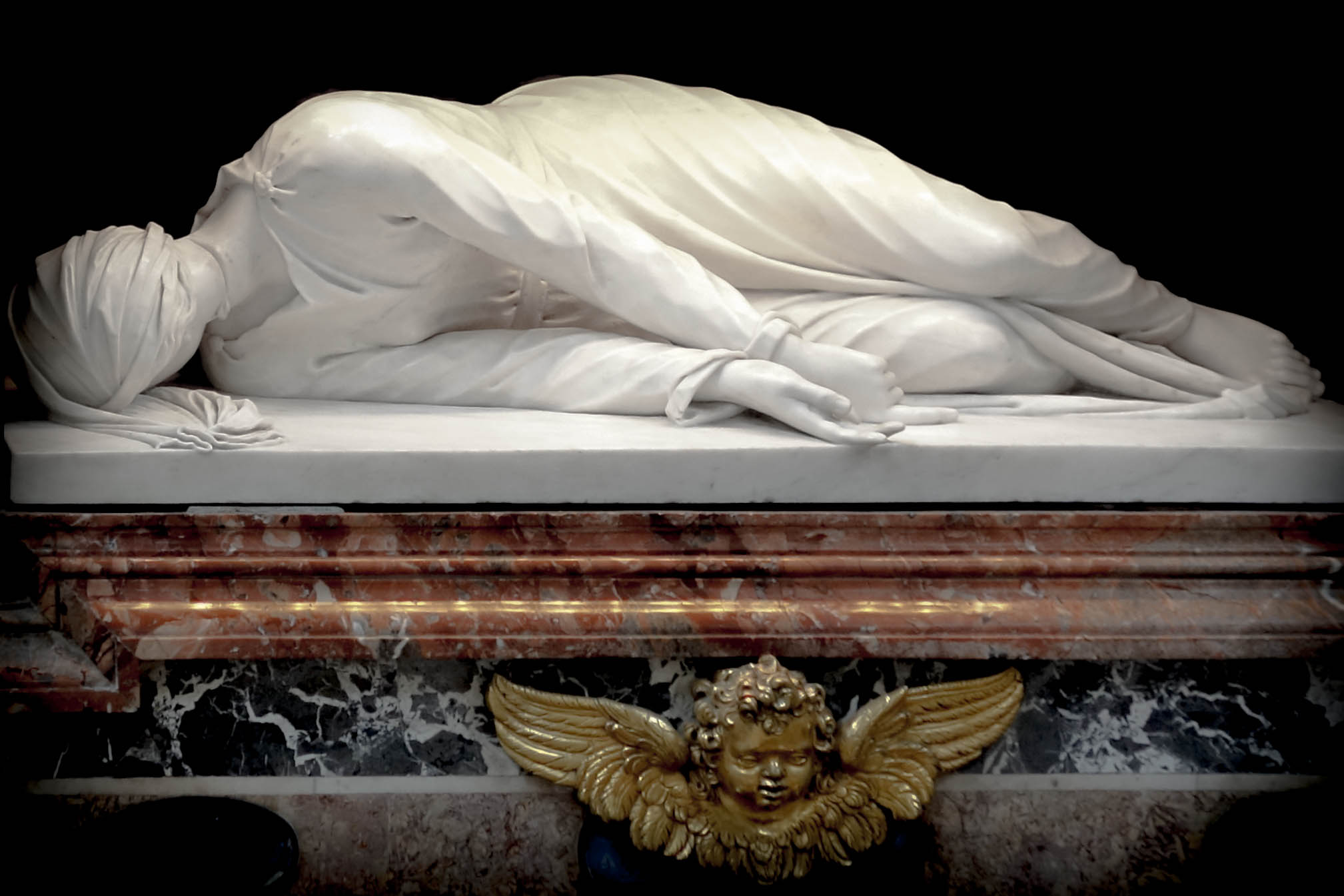
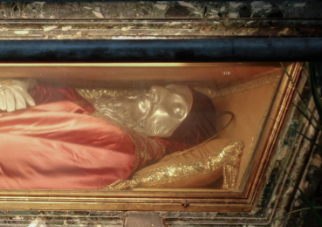
In other cases, the coverings are more obvious. You’ll see masks made of metal, like this one worn by Pope St. Pius V or saints entombed and represented by a sculpture showing how they were found, like this famous one of St. Cecelia. Conceptually, these covers are the same as wax masks. It’s just that wax mimics flesh so well that portraiture gets conflated with trickery particularly in churches that don’t have much information available.
But seriously, no one is trying to trick you or pretend that these bodies look like they just laid down for a nap. So go ahead, describe that incorrupt corpse as wax-covered or mummified. It’s cool. In fact, you might be surprised by how much skeptics would agree with the little old nuns who live with them, at least when it comes to the physical corpses.
Sources:
Christian Mummification: An Interpretative History of the Preservation of Saints, Martyrs and Others by Ken Jeremiah
The Mummy Congress: Science, Obsession, and the Everlasting Dead by Heather Pringle
The Incorruptibles by Joan Carroll Cruz
